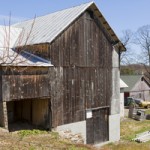This story is really HUGE, but it has quit a few moving parts, so bear with me.
Bike paths and sidewalks are being built all across the United States so that someday, when we are forced to abandon are cars, we will have bike paths on which to travel. However, since bike paths are really expensive the feds have done two things to get local government to agree to build the bike paths. First the feds offer grants to the local government (the money is usually funneled down through regional boards), which in theory helps cover some of the cost of the road itself. In return the local government often has to promise to use a Complete Street design. A Complete Street design requires sidewalks and bike paths be built adjacent to the road that is being built or repaired.
It is not uncommon for these extra features, which really add to the overall width of the project, to force the taking (eminent domain) of private property on either side of the road bed.
To receive and keep the grant the local government has to adhere to a strict time-table. That means, if a property owner chooses to fight the loss of their property, the time-table may be slowed to the point that the grant may be lost. This explains why some local governments have used the “quick-take” process, which allows the local government to come onto contested property and get on with the project denying the property owner their day in court.
The logic has been that quick-take has been acceptable in the past to speedily facilitate the building of roads, but in recent years quick take is being used for sidewalks and bike paths, too.
In Perrysburg, Ohio this situation with a slight twist (the land was being taken, not by the property owners’ local government, but by a neighboring local government!) occurred. You can read this interesting story by clicking on this link.
What makes the Perrysburg, Ohio situation different is the homeowners who were threatened with eminent domain used the talents of Maurice Thompson Executive Director of the 1851 Center for Constitutional Law. Thompson was able to win this incredibly important court case which will prevent quick-taking property to build sidewalks or bike paths. This will force the system to provide property owners their day in court and make it much more difficult for the Complete Street design to be used. Thank you, God! You can read about this important case by clicking on this link.



